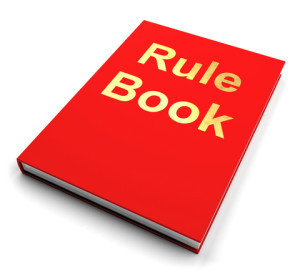In my last post, I talked about having to cut twenty percent of the Flyer to conform to the ‘rules’ of submission in the publishing industry. The job is done. Twenty five thousand words lie on the cutting room floor. Editing hurts, but to my surprise, on this occasion I quite enjoyed the process. In a way, at least.
I was surprised, because 20% is a lot by anyone’s standards. I wasn’t even sure I wan ted to do it. How could the story, which I thought was just fine the way it was (I still think that), survive that kind of attack? Thing is, though, if you want to get published in the traditional way, then writing a good book that people will want to read is only the first step. Then you have to get an agent to read it, and agree that not only is it a good book that people will want to read, but it is a book worthy of his or her time, effort and reputation, all of which are at stake when deciding to represent an author’s work.
ted to do it. How could the story, which I thought was just fine the way it was (I still think that), survive that kind of attack? Thing is, though, if you want to get published in the traditional way, then writing a good book that people will want to read is only the first step. Then you have to get an agent to read it, and agree that not only is it a good book that people will want to read, but it is a book worthy of his or her time, effort and reputation, all of which are at stake when deciding to represent an author’s work.
Agents get a lot of material submitted to them. I mean, really, a lot. Back when I actually had an agent, I saw the slush pile of manuscripts (in the pre email days). They pretty much cascaded through the letterbox every day and I don’t suppose that has changed. For that reason, agents apply filters at every stage of the process to weed out as much material as possible. There are rules, not cast iron, but rules nevertheless, that authors have to comply with when making submissions. I won’t go into them all here, but since I’m going to be submitting The Flyer, I’ll talk about more of them as I start the process. For now, I’ll stick to the one regarding novel length.
The Flyer is set in the period around the First World War, so the genre is historical fiction. Publishers want novels to have a maximum length, which is usually between 90 and 100 thousand words, though for historical novels that can stretch to 110, which is roughly 320 pages, depending on type, layout etc. The Flyer as it is represented on this site, which is the version that is for sale, is 135 thousand words. So why does it matter? Well, the answer is cost and risk, simply. This rule applies primarily to authors who are unknown or don’t have a more or less guaranteed readership, when things becomes much more flexible. It’s also far less important in the case of ebooks, for reasons that will become apparent.
Publishing is a business, and like any business, there is cost involved in getting a product into the hands of the end-user, in the case of books, that’s you and me, the readers. With a book, there are editing costs, which is a per-word calculation, and there are print, warehousing and distribution costs, which relate directly to the amount of pages in a book and its weight and physical dimensions. These don’t add up to a huge amount for a single title, but publishers print many titles, and when considered in that light, the costs are huge. For a foreign publisher, there are also translation costs to consider, which depend on the length of the book. It is for these reasons that publishers and therefore agents, stipulate a certain length for novels. I get this, and because of that I know if I submit The Flyer at 135 thousand words, there’s a good chance it won’t even be read. That’s the filtering process. And that’s why I had to chop out 20% of the novel I had slaved over. It’s tough, but that’s life, as we all know.
warehousing and distribution costs, which relate directly to the amount of pages in a book and its weight and physical dimensions. These don’t add up to a huge amount for a single title, but publishers print many titles, and when considered in that light, the costs are huge. For a foreign publisher, there are also translation costs to consider, which depend on the length of the book. It is for these reasons that publishers and therefore agents, stipulate a certain length for novels. I get this, and because of that I know if I submit The Flyer at 135 thousand words, there’s a good chance it won’t even be read. That’s the filtering process. And that’s why I had to chop out 20% of the novel I had slaved over. It’s tough, but that’s life, as we all know.
Next post I’ll talk about how I went about actually doing it.
 newest »
newest »
 newest »
newest »
 Thank you for that glimpse of business in the publishing world. The editor of my first book told me to lose the last six chapters of an already small non-fiction book. For 30 minutes I was devastated and then I figured out how to do it. . . when I was done, it was a much better book. I hope my next two books, which are fiction, reflect all I have learned so far. I look forward to how you went about actually doing it. . .
Thank you for that glimpse of business in the publishing world. The editor of my first book told me to lose the last six chapters of an already small non-fiction book. For 30 minutes I was devastated and then I figured out how to do it. . . when I was done, it was a much better book. I hope my next two books, which are fiction, reflect all I have learned so far. I look forward to how you went about actually doing it. . .






